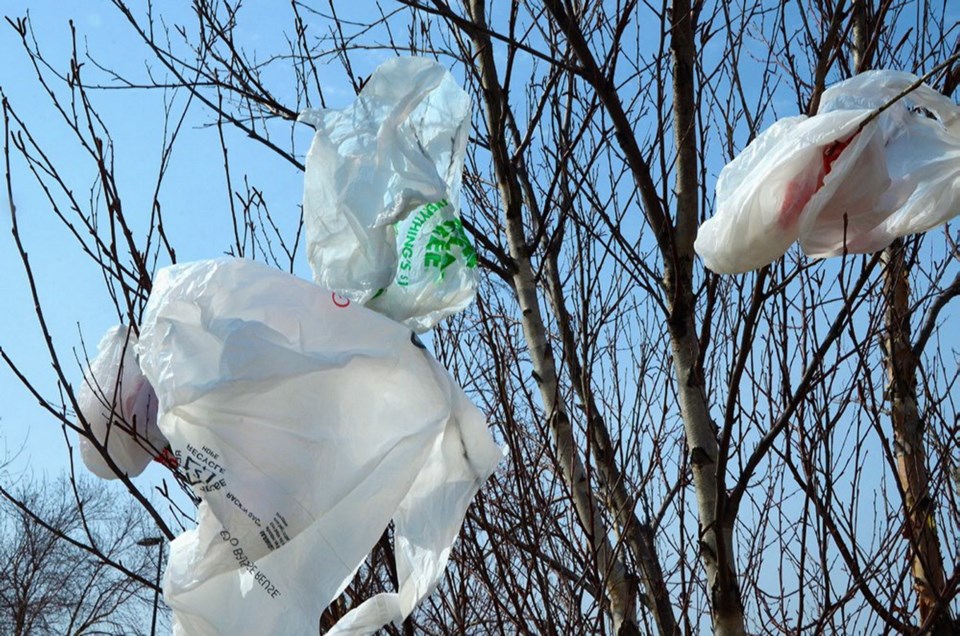Critics of the ban on plastic bags cite the costs that will result. While it’s true there will be some costs associated with the ban, the costs of not banning plastic will be much higher.
On Jan. 11, Victoria city council voted to oust the plastic bag by passing a bylaw that prohibits businesses from offering or selling single-use plastic bags to shoppers.
The law forces businesses to instead provide paper bags (sold for 12 cents each) and reusable bags ($2 a pop). The bylaw went into effect on July 1, with enforcement to be implemented by January 2019.
The decision was met with a swift response from the National Plastic Board of Canada, which challenged the decision in the Supreme Court of B.C. The association stated the city doesn’t have the jurisdiction to enforce such regulations on businesses, and fought the decision vigorously in the courtroom, to no avail.
Why this war on plastic? We’ve seen drama unfold in other cities enforcing similar anti-plastic laws, such as in Toronto and Montreal, sparking considerable controversy. The bylaw has taken heat from concerns that it will not only hurt businesses, but might actually be more harmful for the environment.
In a response to the “green” rationale for the bylaw, the plastic board claimed the ban would hurt the environment, citing a 2007 report that found paper bags have a greater cumulative greenhouse-gas effect than plastic.
How can paper be worse for the environment than plastic? Well, it comes from how we measure the impact. If we look strictly at emissions created by making a plastic bag versus a paper bag, then plastic comes out on top. However, to truly assess the environmental impact, we have to look a little deeper.
First, with this bylaw, one plastic bag unused does not equal one more paper bag for consumers. By adding a small fee to each paper bag purchased, shoppers are encouraged to bring their own reusable bags. A similar fee-based regulation of plastic in the U.K. (about 10 cents per bag) has decreased bag consumption there by 90 per cent in three years (that’s a nine-billion-bag drop). So, taking reusable bags into account means GHG emissions are far lower if we axe the plastic.
A more important note to Victorians’ wallets, however, relates to where the plastic ends up. Unlike paper, plastic doesn’t break down — it can exist indefinitely in a landfill, park or waterway in tiny pieces called microplastics. Research examining microplastics shows that they concentrate at shorelines and seep into the sea critters we love to eat such as oysters, clams and mussels.
What’s more, plastics act as a chemical “sponge” that soaks up and stores potentially harmful chemicals. The plastic is consumed by us via the seafood, and can lead to unknown health effects. Due to the complex microplastic toxicity, we don’t yet know how it truly affects us, but we know we’re consuming up to 11,000 of these tiny plastic particles per year via seafood.
These findings and their explosion of microplastic-related media coverage have especially hurt the shellfish business, the revenues of which total more than $250 million a year in B.C.
Why is this not included in the assessments that show paper is more harmful to us than plastic? Because the term “microplastic” has only been around for less than 10 years, and its effects are only just now being studied. The measures used in assessing plastic versus paper bags (i.e. strictly comparing GHG emissions) don’t include this impact. As a result, we aren’t up to date on how much our single-use bags are costing us.
The key here appears to be the way we measure the impact of plastic. We have been critical, and rightfully so, as to how assassinating the plastic bag will hurt Victoria’s businesses and environment. But we must make sure we measure the full impact of plastic at a larger scale. Our plastic use is concentrating in our seafood and potentially costing us millions in one of our prized exports, while making the British Columbians eat more plastic than they bargained for.
As seen in our neighbours across the pond, support for plastic regulation grows yearly as people start to see the benefits in healthier, wealthier natural resources. And if there’s one thing we love in Victoria, it’s our beautiful land and sea.
When we are faced with figures such as this, we must ask ourselves is: Could we have afforded not to ban plastic bags?
Talen K.L. Rimmer is an undergraduate student in the University of Victoria’s department of biology and environmental studies.



